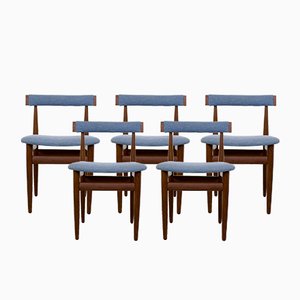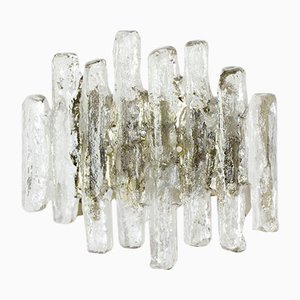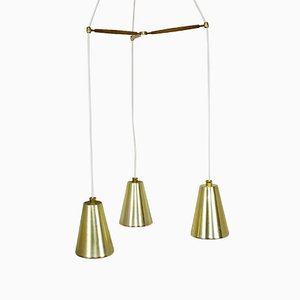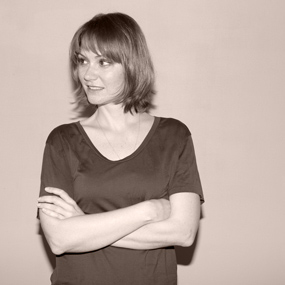How DC Hillier's passion project sparked a community of thousands
Midcentury Modern Mania
Just a few years ago, DC Hillier launched a Facebook group to connect with others who share his passion for midcentury modernism. There was no commercial aim; it was just meant to be a casual, semi-private outlet for posting nostalgia-laced archival images of furnishings, interiors, and architecture, while crowd-sourcing attribution information and back-stories for found objects of design. Fast-forward to today, the group boasts over 80,000 members—and counting!
“Mid Century Modern,” as the closed Facebook group is called, may have begun just for fun, but it’s become a robust online hub where design professionals and amateurs alike meet to exchange anecdotes and pictures of their always joyful encounters with 20th-century design. Inspired by the voracious appetite for midcentury modernism that he’s tapped into through his group, Montreal-based Hillier recently launched the education-oriented website MCM Daily—with its attendant MCM Daily Facebook page, currently at around 25,000 likes—and his own Twitter and Instagram accounts, the latter of which is pushing 50,000 followers.
Born in a small fishing village on the east coast of Canada, Hillier never guessed that his “free” time would become so full. He still maintains his day job as a residential renovator and interior designer, but his online life is increasingly making an impact IRL. As fellow MCM fans, we just had to get to know the man behind all the midcentury mania.
Wava Carpenter: Your online bio mentions that you came to love midcentury modern design while attending film school. Can you tell us more about how the love affair began?
DC Hillier: Actually, there is a personal connection for me between design and film. When I was about 12, I saw the James Bond film You Only Live Twice on TV. I was utterly transfixed by the set design. It was my first spark of modern design awareness.
When I attended the Ontario College of Art & Design in Toronto to study film and media, I took a few design courses. While I loved studying film, modern design quickly became my new passion. I devoured every book and magazine I could find on the subject—I still do, in fact!
WC: What prompted you to launch MCMDaily.com? What’s the mission?
DC: MCM Daily Magazine is a spin-off from my Mid Century Modern Facebook group, which initially was just a fun way to post a few photos of great pieces of classic design and chat about it with others. What caught me by surprise was that there are a large portion of members who are just as eager as I am to learn about the pieces and the designers and manufacturers behind them. I started MCMDaily.com as a resource for anyone who not only wants to look at great design but also wants to understand more about design, and the designers as well.
WC: Can you tell us more about your prolific activity on social media? How long have you been developing these channels, and how do your curate your online presence?
DC: While I had websites for myself and for my Clairtone collection, Facebook was my first online social interaction. Since 2012, I’ve been running the Mid Century Modern group, and then a few years later I started MCMDaily.com and its Facebook page and Instagram account.
I learned soon that each social media venue is a different beast and needs to be treated differently. Instagram, for instance, is constant and quick, so information needs to be delivered in a short and concise manner. Whereas the Facebook group has a friendlier sense of community and you can post multiple images with more info. It’s more relaxed.
As far as how I choose what to post, I always endeavor to show not just the well-known classics but also the more obscure and lesser-known pieces of design. I also try to post as much as I can from female designers of the period, because they have too often been relegated to the fringe of design history and deserve to have their work spotlighted.
WC: Can you tell us more about the community you’ve created online? I imagine your activities there must be both gratifying and time consuming. How has your online presence affected your “real life”?
DC: Ha! It does indeed impact my real life, and I’ve been called out on it by friends. It’s been several years now of “life online.” And with the group, the online magazine, and Instagram, I spend at least three or four hours a day on it—sometimes longer. But the people who follow my posts and the members of the Facebook group are an incredible bunch. They’re equally eager both to learn about something I care about and to share what they know. I discover something new every day from them! I mean, tell a kid growing up in a small, isolated fishing village with a penchant for design that he would one day be “friends” with 75,000 people who also like modern design? I’d say I’m pretty lucky.
WC: Can you tell us more about your own collection? What are some highlights? Which pieces do you live with everyday?
DC: I’ve been collecting for several years now and have many pieces I’m quite happy with. But if I had to choose a few favorites, I’d say: a pair of early-issue EJ 5 Corona Chairs by Poul Volther, because they not only look great but also are incredibly comfortable; and a prototype Floris Chair designed and made by Günter Beltzig (and one of three he took to the Cologne Furniture Fair in 1968). I wasn’t sure what I had until I contacted Beltzig himself and he kindly confirmed what it is and the story behind it. And finally, a collection of fiberglass pieces—barstools and low tables—designed by Nanna Ditzel for Domus Danica in 1968. I live with all these pieces, and I never tire of them.
WC: What is your approach to collecting? Are you on the look out for certain pieces? Certain designers? And is it about investment or chance encounters?
DC: When I started collecting initially, it was simply a random acquisition of anything that caught my eye that I liked (and could afford!). But as I came to learn about designers and international approaches to modern design, I found myself quite drawn to ’60s European design. The “plastic fantastic” pieces that were often more flights of design fancy than functional objects. But they do have a charm! I’m currently on the lookout for a pair of high-backed Culbuto Chairs by Marc Held.
I don’t think about investment value when I find a piece. It’s true that I’ve bought many items in my collection for much less than they are worth, but I don’t give it much thought.
WC: For you, what is midcentury modern? Do you embrace all the material culture created between, say, 1930 and 1970? Or is there a set of aesthetic criteria that you look for?
DC: The question, “What is midcentury modern?” is one of strife for many online! But as there was no actual design movement or school of thought called “midcentury modern,” the phrase is simply a blanket term for many design movements from the 1940s to around 1970. Much in the same way “Victorian” is a blanket term for several design styles in the 19th century.
When one learns about modernism and the various international interpretations of it, the answer becomes simple. For me, it’s design with no precedent. There are no “neo” or “revival” styles in modern design. When I look at a Hans Wegner chair, for instance, I am not looking at a chair that is drawing on preset style history. It is new, original, often simple, and approachable. That to me is modern.
WC: Which one piece of midcentury design do you feel best encapsulates the era, and why? Which one designer?
DC: This is going to sound very much like a cliché, but after giving it some thought I would have to say the design that best encapsulates the era is the Model 670 Eames Lounge designed by Charles and Ray Eames for Herman Miller in 1956. Quite simply, it is the epitome of modernism and has earned its status as an icon of timeless design. It works in any room.
And for me, the designer who best encapsulates the era is Finn Juhl of Denmark. He introduced the world to Scandinavian modern with pieces that were beautifully designed with a delicate, soft touch. Juhl’s restrained use of color and mastery of the materials is unrivaled.
WC: Why do you think midcentury modern design continues to attract such a large number of fans?
DC: That is a good question and one I’ve thought about many times. The continued popularity of midcentury modern design may simply come down to the fact that it often feels that we live in rather ephemeral times, with everything being instant and disposable. We do not hang on to our consumer products for very long these days. New furniture may be cheap, but it’s been designed to be replaced in just a few years. When our parents bought a sofa, it was going to be in the home for ten years or more. There are many photos that show children growing up on just the one sofa. And that’s endearing. And while I shouldn’t wax poetic about it, unlike some flat-pack item, a great piece of midcentury modern furniture has history; it has a sense of permanence. They are beautiful, well-designed things that are very easy to live with and almost reassuring to have around.
WC: What’s next for you?
DC: Currently, I’m working on adding more media content to MCMDaily.com. I’ll be adding videos and will be starting a regular podcast about modernism. I’m also starting a consulting business for furniture and design evaluation and hope to be working with auction houses as well as individual collectors and sellers. And, yes, I will continue to talk about modern design to anyone who will listen.
-
Text by
-
Wava Carpenter
After studying Design History, Wava has worn many hats in support of design culture: teaching design studies, curating exhibitions, overseeing commissions, organizing talks, writing articles—all of which informs her work now as Pamono’s Editor-in-Chief.
-
More to Love
Vintage Danish Teak Chairs by Hans Olsen for Frem Røjle, Set of 5

Mid-Century Danish Dining Chairs from Glyngøre Stølefabrik, Set of 5

Mid-Century Modern Walnut Sideboard with Drawers, 1960s

Large Ice Glass Icicle Wall Lamp from Kalmar, 1960s

Vintage Brass, Teak and Glass Three-Armed Ceiling Light from Lightolier


